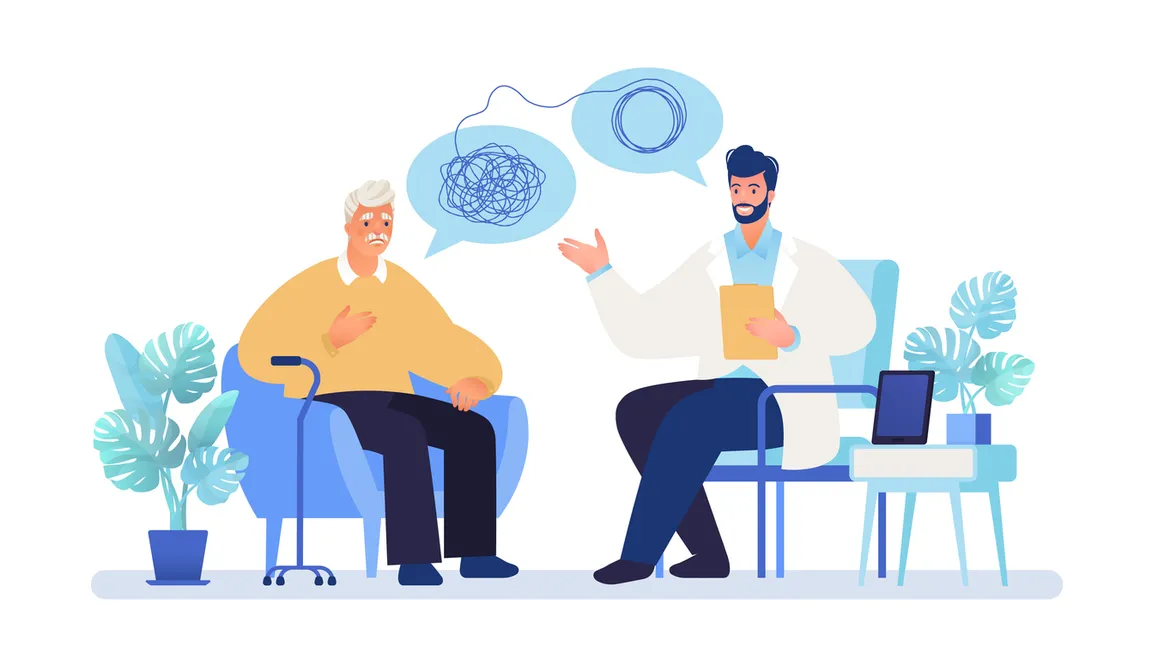Shifting Perspectives: How to Manage Chronic Pain with the Biopsychosocial Model

Pain is more than a physical sensation. The International Association for the Study of Pain defines pain as “an unpleasant sensory and emotional experience associated with, or resembling that associated with, actual or potential tissue damage.” This definition highlights two important points: first, pain is sensory and emotional; second, pain can be experienced in the absence of an identifiable pathology.
"This definition highlights two important points: first, pain is sensory and emotional; second, pain can be experienced in the absence of an identifiable pathology."
As the medical director of Comprehensive Pain Recovery at Cleveland Clinic’s Neurological Institute, I see firsthand that these nuances are often overlooked. Chronic pain is frequently treated through the same lens as acute pain, but this approach can be inadequate for patients. While acute pain typically signals injury or illness and resolves once the tissue heals, chronic pain persists long after tissues have healed or may even arise without any obvious injury.
Managing chronic pain requires a shift in perspective: it’s not just a lingering symptom, but a complex condition that requires its own targeted approach. To treat it effectively, we need to account for the biological, psychological, and social factors that shape a person’s experience of pain. In this blog post, I’ll break down each component of this evidence-based biopsychosocial model, explore the mechanisms behind chronic pain, and share strategies I use with patients to help them regain control—not just over their pain, but over their lives.
"Managing chronic pain requires a shift in perspective: it’s not just a lingering symptom, but a complex condition that requires its own targeted approach."
What is Chronic Pain?
When attempting to identify a source for a patient’s pain, we fall back on our tried-and-true pain pathway: transduction, transmission, perception, and modulation. It is through this pathway that we can potentially localize a cause, then employ rational therapeutics to treat it. But before we get there, let’s take a closer look at what pain is.
No one teaches us what pain is. We know from a young age that touching a hot stove is painful or stepping on something sharp should be avoided. Our understanding of an acute pain process informs us about everything we need to know about pain: it should be avoided and, when present, should be taken seriously. When the injury is healed, all is well, and life goes on. But what about when the pain doesn’t go away after healing? What if there is no injury to report, but there is pain?
"But what about when the pain doesn’t go away after healing? What if there is no injury to report, but there is pain?"
Chronic pain is defined as pain that persists for greater than three months and often after healing has taken place or in the absence of any initial identifiable pathology. But who teaches us about chronic pain? I’d argue no one. We essentially just carry over what we know about acute pain and think that will do. However, defaulting to our acute pain instincts with chronic pain can make things worse.
The Biopsychosocial Model
When we talk about the management of chronic pain we need to view it not as simply a symptom, but a disease unto itself. And the treatment approach, one that is rooted in over forty years of research, is via the biopsychosocial model, introduced earlier.
"When we talk about the management of chronic pain we need to view it not as simply a symptom, but a disease unto itself."
This model understands that chronic pain is more than a sensation; it is the suffering that goes along with it. As such, the whole person needs to be treated rather than simply focusing on where they are having pain. A breakdown of the name reveals the three components that need our attention: biological, psychological, and social. While for any given patient, one of these three may be more prominent and require greater care when we evaluate them, we will talk about each one in the order listed by the model. I like to think of this as a three-legged chair. If one of these aspects could be addressed, we could break the cycle of chronic pain and disability.
Biological Aspects of Chronic Pain
The biological components of chronic pain management include self-care, conservative therapies, pharmacologic options, interventional pain management, and surgery. When educating patients, I explain that pain management is a team approach requiring their efforts as well as ours. In terms of what the patient can do for themselves, aka self-care, this includes optimization of diet/nutrition, activity, and sleep. These three factors, while unlikely to get rid of pain, can cause pain to get worse, so fundamental understanding and control are important. Referrals to dieticians, physical therapists, and sleep medicine specialists can begin the process of evaluation and treatment.
"When educating patients, I explain that pain management is a team approach requiring their efforts as well as ours."
As clinicians, we have different pharmacological options including non-steroidal, gabapentinoids, and antidepressants. Off-label use of low dose naltrexone and ketamine infusions is also worth discussing, if conventional therapies fall short. If there are anatomical dysfunctions such as arthritis or nerve compression, interventional pain treatments such as medial branch blocks and epidural steroid injections can be trialed, respectively. For more significant anatomical dysfunction, consulting our surgical colleagues may be beneficial.
Psychological Aspects of Chronic Pain
The psychological aspects of chronic pain are best described by the following pattern: maladaptive thoughts leading to psychological distress leading to maladaptive behavior. This cycle, once started, will continue and lead to further impairment and disability in patients with chronic pain.
Maladaptive thoughts include thoughts like, “I’ll always be in pain” or “No one can help me,” which can lead to or worsen psychological distress, such as depression or anxiety. With elevated psychological distress, maladaptive behaviors—like staying in bed all day or no longer socializing—ultimately lead to further maladaptive thoughts.
"CBT-CP has been shown to be effective at managing maladaptive thoughts, psychological distress, and maladaptive behaviors."
Thankfully, there is something that help: Cognitive Behavioral Therapy for Chronic Pain (CBT-CP). CBT-CP has shown to be effective at managing maladaptive thoughts, psychological distress, and maladaptive behaviors. Discussing this option with patients early and helping them understand that the techniques they learn from CBT-CP need to be practiced at home on a regular basis can lay an excellent foundation for future treatments—while also giving them a greater sense of control over the pain.
Social Aspects of Chronic Pain
The social aspects of pain may come as a surprise to many. While we instinctively want to help those who are in pain, oftentimes that same help may be detrimental to those in chronic pain. Family members may play a role in the initiation and maintenance of chronic pain. As such, treatment involves working not only with the patient, but also family members or close friends to help extinguish behaviors that may perpetuate the pain cycle. On an even more basic note, patients without access to consistent food, housing, or medical care can also have difficulties controlling their pain.
Evaluating biomedical and psychosocial components are necessary to provide the most comprehensive and appropriate care possible.
My Approach to Addressing Chronic Pain
I have found the following skill to be invaluable when working with chronic pain: listening. All too often patients are not listened to and feel unheard.
"I have found the following skill to be invaluable when working with chronic pain: listening."
As a physician, I completely understand the time constraints we are put under to see more patients in less time. If a reorganization of time spent with patients is not an option, setting expectations at the start of the visit may help offset that: what is the one most significant pain complaint you’d like to discuss today? Follow-up appointments for other complaints can be made subsequently. A plan of care when leaving is also very beneficial; organization within the chaos of chronic pain can be quite refreshing for patients.
So, a patient encounter has the following ingredients: listening, validating, emphasizing self-care, recommending CBT-CP, discussing biomedical treatments, and planning. As I explain at the end of each visit, managing chronic pain is a marathon and today we’re only stretching. But every journey begins with a single step, and I am always honored to witness that.

Be the first to read articles from the field (and beyond), access new resources, and register for upcoming events.
SubscribeEdited by Melissa Baron. Clinical review by Andrew Esch, MD, MBA.
